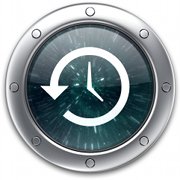 Time machine keeps both the original file and its recently updated versions. For instance, a text file that underwent few updates 4-5 times in a week, will be backed by Time Machine every time the update was done, keeping the oldest and most recent ones. A general question arises: Will the Time Machine end up loosing all the space due to multiple updated files? The answer is NO, Time Machine is good at managing drive space, it removes the old backed up files by its own and thus only keeps the most recent ones.
Time machine keeps both the original file and its recently updated versions. For instance, a text file that underwent few updates 4-5 times in a week, will be backed by Time Machine every time the update was done, keeping the oldest and most recent ones. A general question arises: Will the Time Machine end up loosing all the space due to multiple updated files? The answer is NO, Time Machine is good at managing drive space, it removes the old backed up files by its own and thus only keeps the most recent ones.
TM does not offers any archive of the files that have been updated many times. Forget about the original ones that might got replaced over time with the latest updated file.
When cloning comes to the picture, everyone knows it can be easily done with the help of a cloning utility like Stellar Drive Clone. This utility builds up a mirror image of the hard drive, resulting in an identical copy of the original drive, containing each file for only once. Like Time Machine, Clones too can be made to take incremental back-ups keeping the most recent file on the drive. If several files on the drive are updated and again cloned on the destination drive then the cloned copy holds the most recent information for that particular file. Unlike Time Machine, the cloned copy doesn't hold the original as well as updated copy, instead it overwrites the old file with the new one. Compared to the Time Machine, the cloned copy of the drive uses less space because it has to hold only the latest updated file rather than the files that were updated days or weeks ago.
Due to multiple files on the time machine the overall size may exceed, but in cloning as files are most recent, the size remains the same. E.g, 500GB drive will require the size equal to another destination drive.
Cloned copies are mirror images of their original source making them bootable. Now, if the Mac responses are negative and a failure occurs, then you can restore the Mac back to its last settings with the help of the cloned copy.
Making a clone copy of anything is totally dependent on the user's choice of what exactly is to be cloned and when. It is certain that clone copies can't be produced every time.
Being automatic on other hand, Time Machine handles the incremental backup smartly and does not require the user to monitor the backups (like in cloning). The backups are taken every single hour by the TM.
Cloned copy being a separate back up can be kept away from the system, thus if the whole system faces a physical disaster like fire, the cloned copy still remains secure for further use.




